#American Punjabi Model
Explore tagged Tumblr posts
Text
Abhijeet - Ole Ole 1994
Abhijeet Bhattacharya is an Indian playback singer who primarily sings in Hindi Film Industry. Apart from Hindi, he has also sung in other languages including Bengali, Marathi, Nepali, Tamil, Bhojpuri, Punjabi, Odia and his native language Bengali both in West Bengal and Bangladesh. Abhijeet has sung 6034 songs in more than 1000 films. He was nominated for Forbes Popular 100 Indian Celebrity in the year 2014.
Yeh Dillagi (This Cheerfulness) is a 1994 Indian Hindi-language romantic comedy-drama film directed by Naresh Malhotra and produced by Yash Chopra. Based on the 1954 American film Sabrina, its story revolves on two brothers (Akshay Kumar and Saif Ali Khan) who fall in love with their family driver's daughter, Sapna (Kajol), a successful model. The film released on 6 May 1994, and emerged as a commercial success, grossing ₹10.8 crore against its ₹1.6 crore budget.
At the 40th Filmfare Awards, Yeh Dillagi received 4 nominations – Best Actor (Kumar), Best Actress (Kajol), Best Music Director (Dilip Sen, Sameer Sen) and Best Male Playback Singer (Abhijeet for the song "Ole Ole"). The film's soundtrack album contains seven songs composed by Dilip Sen-Sameer Sen. It became one of the top three best-selling Bollywood soundtrack albums of 1994, with 4.5 million sales. The song "Ole Ole", sung by Abhijeet was a hit at the music charts. "Ole Ole" was remixed for the 2020 film Jawaani Jaaneman.
"Ole Ole" received a total of 68,2% yes votes!
youtube
401 notes
·
View notes
Text

3x10 Perfect Strangers | Multiculturalism
This episode is (like the rest of the show, but still) particularly and obviously preoccupied with the differences between Canada and America—especially since this is the episode where they fly to Toronto.
As Fraser says upon landing at Pearson about the dual French/English announcements over the PA:


And this is true!
The American “melting pot” philosophy of immigration is an assimilationist one: as different cultural groups join the society, they “melt together” into one common culture. Typically, this means erasing the unique parts of your own culture to become more acceptably American (and you know exactly what that means as well as I do.)
Canada’s multiculturalist approach is instead an example of a “cultural mosaic” model, in which we believe that disparate cultures can co-exist side-by-side and, in maintaining their own individual identity, enrich each other in the process.
The Multiculturalism Act, meant to make preserving and enhancing cultural diversity part of official government policy, was signed in 1971 (the OG Trudeau government was big on this). As of 2016, there were over 250 different ethnic groups in Canada.
Which brings us back to our top GIF!
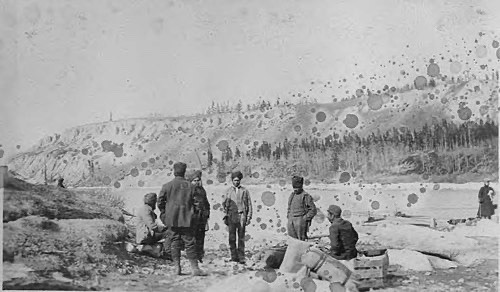

Punjabi Sikhs in Whitehorse and Vancouver, 1906 and 1908
Sikhs are the fourth-largest religion in Canada, and have a large population out West. Canada actually has the largest national Sikh proportion in the world (at 2.1%), and the second-largest Sikh population in the world (after India).
So naturally, some of them would want to join the RCMP.
I’m going to let this article from the CBC tell this story far better than I could:

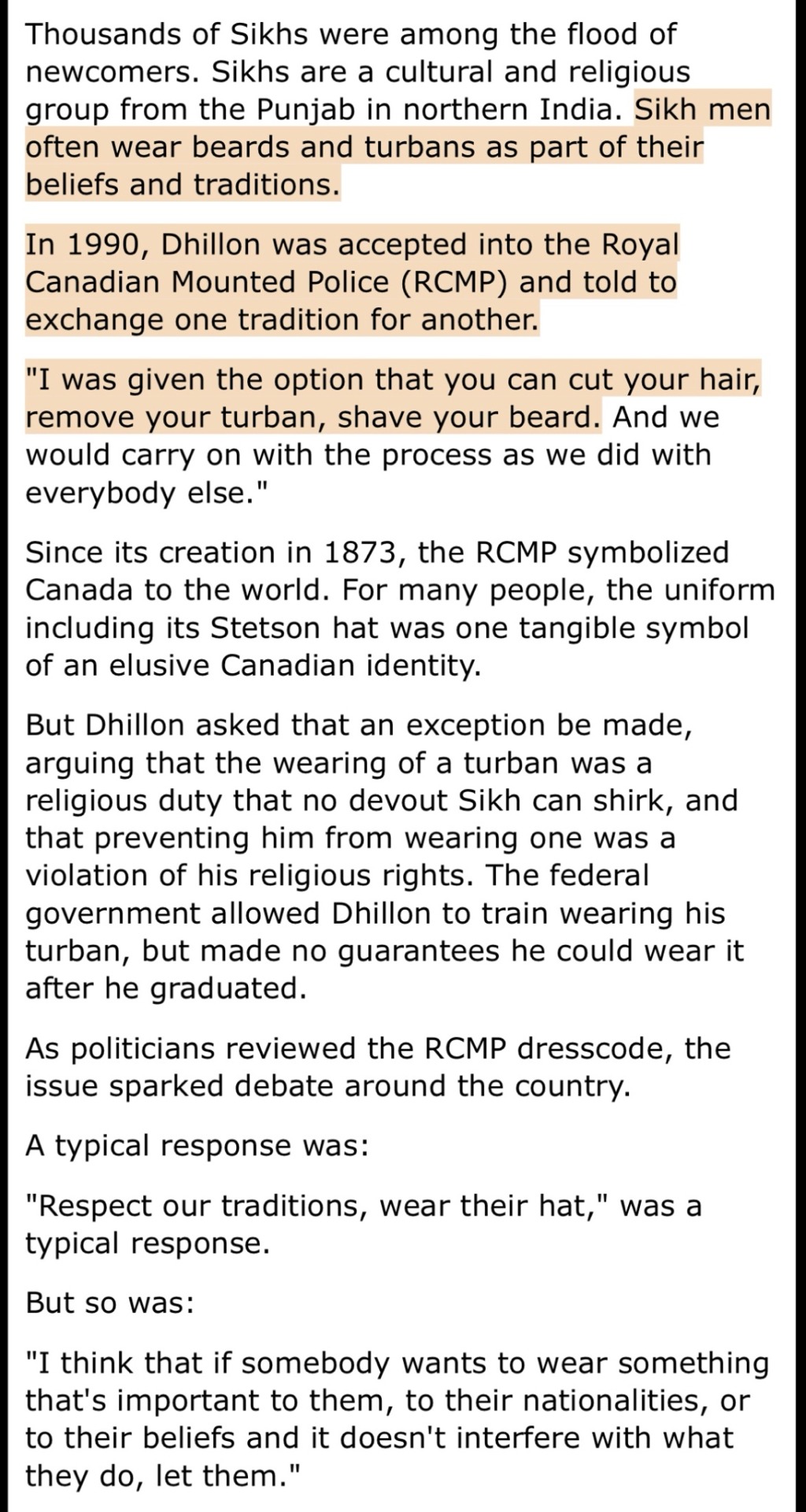
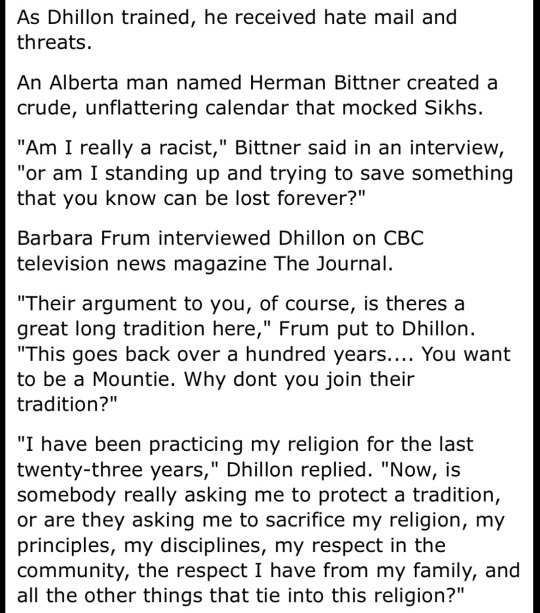

And so that’s why, for a brief moment, due South shows us a Sikh officer in a turban outside RCMP HQ.
(Which is actually the Canadian Blood Services HQ, in the building of what was once the Victoria Hospital for Sick Children, built in 1892!)
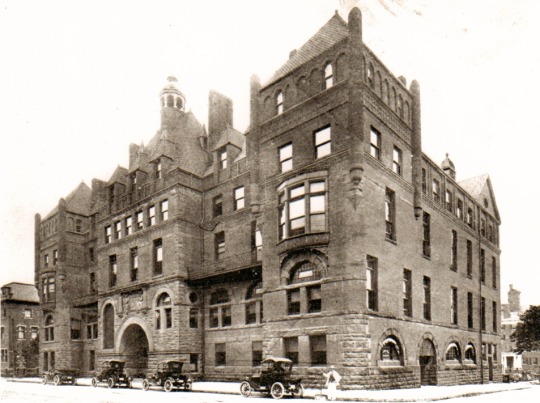
Quiet Canadiana in due South [more]
72 notes
·
View notes
Note
hey ! hope you're doing well. i'm looking for a faceclaim female (20 - 30 yo), dark hair, that could fit to replace tamika fawcett or jennica sanchez plz. can you help ? thxxxxx
Lais Ribeiro (1990) Brazilian [Black, Unspecified Indigenous, White].
Medalion Rahimi (1992) Iranian, Iranian Jewish - uses she/they - has spoken up for Palestine!
Paloma Elsesser (1992) African-American / Chilean-Swiss - has spoken up for Palestine!
Inanna Sarkis (1993) Assyrian Syrian / White.
Mina El Hammani (1993) Moroccan - has spoken up for Palestine!
Mia Khalifa (1993) Lebanese - has spoken up for Palestine!
Raveena Aurora (1993) Punjabi Indian - is pansexual - has spoken up for Palestine!
Huda Elmufti (1994) Egyptian - has spoken up for Palestine!
Zorzo Nathanan Akkharakitwattanakul (1994) Thai.
Zión Moreno (1995) Mexican [Unspecified Indigenous, Spanish] - is a trans woman.
Neelam Gill (1995) Punjabi.
Raven lyn (1995) African-American, Puerto Rican, Unspecified Indigenous, White.
Charlee Fraser (1995) Awabakal.
Gazini Ganados (1995) Palestinian and Bisaya Filipino.
Imaan Hammam (1996) Moroccan / Egyptian - has spoken up for Palestine!
María Isabel (1996) Dominican - has spoken up for Palestine!
Sagonia Lazarof (1996) Assyrian.
Yumi Nu (1996) Japanese / White.
Blair Lamora (1997) Ojibwe / Argentinian.
Natalie Nootenboom (1997) Japanese / White.
Janella Salvador (1998) Bisaya Filipino - has spoken up for Palestine!
Joanna Pincerato (1998) Mexican, Syrian, Swedish and Italian - has spoken up for Palestine!
Lauren Tsai (1998) Taiwanese / White.
Alina Khan (1998) Pakistani - is trans.
Natasha Stroeva (1999) Yalut.
Sherry-Lee Watson (1999) Arrernte - has spoken up for Palestine!
Sharon Alexie (2000) Cameroonian.
Karen Vega (2001) Mexican [Oaxaca].
Mika Schneider (2001) Japanese and French.
Aaron Philip (2001) Afro-Antiguan - is a trans woman and has cerebral palsy - has spoken up for Palestine!
Maitreyi Ramakrishnan (2001) Tamil - has spoken up for Palestine!
Shay Zanco (2001) Libyan / White.
Denise Julia (2002) Filipino - is pansexual - has spoken up for Palestine!
Hey anon! I'm not familiar with many models / Instagrammers so some of these are actresses.
6 notes
·
View notes
Text
Mississippi Masala: The Ocean of Comings and Goings
By Bilal Qureshi MAY 25, 2022
often remark that my Punjabi parents immigrated to the American South woefully unaware that they’d brought us to a place with an incurable preexisting condition. Racism doesn’t belong exclusively to the South—the former Confederacy—but it was implemented at industrial scale across the region’s economic, political, and cultural life. Alongside this landscape’s sublime natural beauty—rivers, fields, and bayous—sits the history of America’s unsparing brutality against its Black citizens. On the other side of the world, in South Asia, as well as among its global diasporas, anti-Blackness is embedded in ideas of colorism and caste, in tribal imaginaries and policed lines of “suitable” marriages.
The possibility to live—and to love—across racial borders is the theme of Mira Nair’s extraordinarily prescient and sexy second feature film, Mississippi Masala (1991). Three decades later, it speaks to a new generation as groundbreaking filmic heritage—but also with an almost eerie, prophetic wisdom for how to live beyond the confinements of identity and color. Even by today’s standards, the film is a radical triumph of cinematic representation, centering as it does Black and Brown filmmaking, acting, and storytelling. It is also a genre-defying outlier that would likely be as difficult to get financed and produced today as it was then. Part comedy, part drama, rooted in memoir and colonial history, the film that Nair imagined was a low-budget independent one with global settings and ambitions. The notion of representation—perhaps more accurately described as a correction of earlier misrepresentations—wasn’t its point or its currency. Race was its very subject. Nair has said she wanted to confront the “hierarchy of color” in America, India, and East Africa with the film—the kinds of limitations that she had experienced firsthand by living, studying (first sociology, then film), and making documentaries in both India and the United States. In a shift that began with her first feature film, Salaam Bombay! (1988), Nair set out to transform those real-world issues into fictionalized worlds, translating her sociological observations into works suffused with beauty, music, and, in the case of Mississippi Masala, humid sensuality.

Nair first engaged with the questions at the heart of the film when she came to the United States from India to study at Harvard in the mid-1970s. As a new arrival to the country’s color line, she has recalled, both its Black and white communities were accessible to her, and yet she belonged to neither. The experience of being outside that specific American binary would be a formative and fertile site of dislocation for the young filmmaker. Nair trained in documentary under the mentorship of D. A. Pennebaker, among others, and her first films were immersive explorations of questions that haunted her own life. The pangs of exile and homesickness for lost motherlands became the foundation of So Far from India (1983), and the boundaries of “respectability” for women in Indian society the subject of India Cabaret (1985). Salaam Bombay!—made in collaboration with her fellow Indian-born classmate, the photographer and screenwriter Sooni Taraporevala—carried her Direct Cinema training to extraordinary new heights. Working, from a script by Taraporevala, with nonactors on location in the streets of Mumbai, Nair found a filmic language that could merge the rigor of realism with the haunting emotion of fiction. It would become the creative model for Nair and Taraporevala’s translation of the real-life phenomenon of Indian-owned motels in the American South into a spicy cinematic blend of migration, rebellion, and romance.
During research trips across Mississippi, Louisiana, and South Carolina that Nair made in 1989, she discovered that many of the Indian motel owners in the South had come to the United States from Uganda following their expulsion by President Idi Amin in 1972. Ten years after the East African country gained its independence from British rule, Amin had blamed his country’s economic woes on its privileged and financially successful South Asian community. In the racial politics of empire, the British had privileged the Indian workers they had imported to East Africa, creating racial hierarchies Amin now wanted to destroy by way of politicizing race anew. In a line that is repeated in the screenplay, the mission was “Africa for Africans,” and for tens of thousands of Asian families, it was an uprooting and dislocation from which some would never recover.
In Mississippi Masala, the classically trained British Indian actor Roshan Seth plays Jay, the immigrant father who is the focal point of the “past” of the film’s dual narrative, which is beautifully balanced in the way that it interweaves the perspectives of two generations. In the film’s harrowing overture, Jay—along with his wife, Kinnu (Sharmila Tagore), and their daughter, Mina (Sarita Choudhury)—is being forced to flee Kampala, and he laments that it will always be the only home he has known. With stoic reserve, holding back tears, Seth conveys the gravity of the loss, as the camera captures the lush beauty of the family’s garden and the faces of those they must leave behind. Throughout the film, as Kinnu, Tagore—an acclaimed Indian film star and frequent Satyajit Ray collaborator—is a composed counterpoint to Seth’s troubled Jay in her character’s strength and resilience. When the film picks up with the family two decades later, Kinnu is shown managing the family’s liquor store, while an aging Jay writes to petition Uganda’s new government to reclaim his lost property. Nair’s camera pans up from his writing desk to reveal through his window the parking lot of a roadside Mississippi motel. This is where Jay works and exists in a permanent state of nostalgia, until he is jolted awake by Mina’s demands for a home and a life of her own.
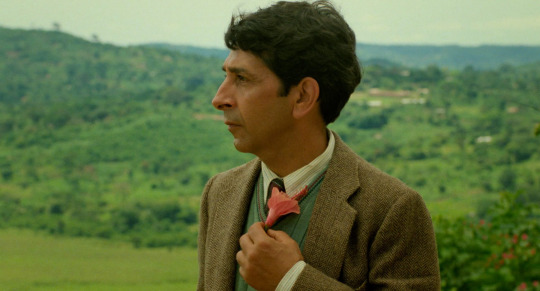
Even as Jay dreams in sepia-toned memories, the film itself never descends into saccharine longing or scored sentimentality. The rigor of the research and on-location filmmaking in both Mississippi and Kampala is reflected in an unvarnished and immersive visual style. While Nair herself clearly understood the fabric of the lives of the Gujarati Hindu families she was portraying, she has discussed how Denzel Washington became a critical collaborator in ensuring that southern Black life was rendered with equal attention to detail, cultural specificity, and dignity. The result is a film whose homes and communities are etched with a palpable sense of reality.
All of Mississippi Masala’s disparate threads are bound together by a distinctly sultry southern love story, which naturally remains the best-remembered feature of the film. The meet-cute of Mina and Washington’s character, Demetrius, is quite literally a traffic collision, a not-so-subtle suggestion that, without a bit of movie magic and melodrama, these two southerners might never have been maneuvered into the exchanged numbers and glances, and palpable wanting, that still burn the screen today. The film is fueled by the gorgeousness and megawatt charisma of both its stars, the young Washington paired with Choudhury in a prodigious debut as a woman at the edge of adulthood—her mane of wavy hair, their sweaty night of dancing to Keith Sweat, aimless late-night phone calls, dark skin in white bedsheets, secret meetings, consummated desires.
In the background of the R&B song of young, electric love are the film’s quieter, deeper notes on migration. A string leitmotif by the classical Indian violinist L. Subramaniam recurs whenever the vistas of Lake Victoria across the family’s lost garden in Kampala appear on-screen in brief flashbacks. Nair’s mastery with music has only deepened with time, resulting in films that integrate archival and original music with a free-form alertness that is distinctly her own. Both for the African American people living amid strip malls in the dilapidated neighborhoods of a region to which their ancestors were brought by bondage, and for the Indian families forced by Amin to flee their homes, exile is expressed in stereo. As Jay pines for the country he lost, Demetrius’s brother dreams of visiting Africa and saluting Nelson Mandela—disparate but recognizable longings and family histories shared over a southern barbecue, American bridges.

There wouldn’t be racial borders, however, if they weren’t policed, and the policing authorities here come from across the racial spectrum. When Mina and Demetrius’s relationship is discovered by nosy Indian uncles, those boundaries flare up. From the Black ex-girlfriend who asks why the good Black men can’t date Black women, to the Indian uncles who barge into Demetrius and Mina’s hotel room, to the gossiping aunties who during phone calls mock Mina’s rebellious scandal, there is a veritable chorus of condemnation. It is portrayed with great comedic timing and wit, including from Nair herself, who delivers some of the sharpest lines of disapproval in the role of “Gossip 1.” But the implications of those judgments remain unfunny by design. The film’s remarkable achievement is the way it never buckles under the thematic weight of these uncomfortable truths. Nair always delivers her cerebral punches with a lightness and warmth that are precisely calibrated. These are the markers of a filmmaker in full control of the tone, color, production design, and, always, music to accompany the emotional demands of her material, and that facility has only gotten sharper in such masterpieces as Monsoon Wedding (2001).
Mississippi Masala showed at festivals in late 1991 and was released commercially in American cinemas in February 1992, within weeks of Wayne’s World and Basic Instinct. Working outside Hollywood’s conventions, Nair joined an extraordinary flowering in independent filmmaking that continues to be celebrated. The year 1991 had been a landmark one for Black cinema already, with the release of Julie Dash’s Daughters of the Dust, Mario Van Peebles’s New Jack City, and John Singleton’s Boyz n the Hood. Spike Lee’s opus Malcolm X, with Washington in the title role, would be released in the U.S. in late 1992. Nair’s film was shown at the same 1992 Sundance Film Festival at which a landmark panel about LGBTQ representation heralded a movement, named New Queer Cinema by moderator B. Ruby Rich, devoted to reclaiming stories of love and suffering from Hollywood’s gaze. These were parallel currents that echoed larger shifts and openings happening in global culture. The collapse of the Soviet Union, the end of apartheid in South Africa, India’s economic liberalization, and the rise of a youthful southern Democrat in the U.S. following a decade of Republican rule were stirrings of a new order. The possibilities were being felt all over the world as Nair’s film of southern futures arrived. Described by the New York Times at the time as “sweetly pungent” and by the Washington Post as a “savory multiracial stew,” Mississippi Masala opened in American cinemas to rave, if exoticizing, reviews, less than a decade after Richard Attenborough’s Gandhi and Steven Spielberg’s portrayal of Indian characters eating monkey brains during a ritual dinner in Indiana Jones and the Temple of Doom. Realistic international cinema featuring everyday South Asian life—as opposed to the Indian musical tradition or Hollywood’s tropes about foreignness—had almost no precedents or peers at the time. The depiction of South Asian characters as ordinary working-class Americans navigating questions of family, money, and love remains a radical achievement. Mississippi Masala also manages to decenter whiteness altogether. In a film about racial hierarchies, white characters appear only in the background, as the motel guests, patrons, and shopkeepers of Greenwood society. By design, this is first and foremost a film about Mina and Demetrius, and the families and communities that formed them. Despite all the extraordinary accomplishments in the streaming age by the current generation of filmmakers of color, Mississippi Masala’s layered portrayal of race and love still feels unparalleled. To hear its characters speak candidly about the real lines that divide them, and reflect on the costs of crossing those lines, is to recognize the rigorous thinking—and living—that informed the screenplay. Even more disappointing than the lack of contemporary equals to the film, perhaps, are the offscreen parallels in South Asian communities like my own, where colorism and anti-Blackness are stubborn traditions yet to be fully dismantled. Stories of interracial love are still rarely told on-screen, and these relationships—the masala mixes—are still not visible enough to become as normalized as they deserve to be.
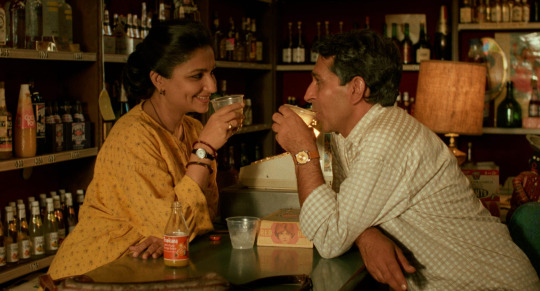
One of Nair’s first films, So Far from India, was filmed between New York City and Gujarat. It opens with a folk musician in the streets of Ahmedabad, a sequence that serves as a prelude to the film, about an Indian immigrant and the wife he has left behind. Nair, as narrator, translates his singing about the ocean of comings and goings. With Mississippi Masala, Nair positioned herself as both a great chronicler and a great navigator of that vast ocean of comings and goings. America is one of Nair’s homes, and she has made several films about the immigrant experience there, including her adaptations of Jhumpa Lahiri’s The Namesake (2006) and Mohsin Hamid’s The Reluctant Fundamentalist (2012). Each has sought to look at the country through the eyes of those usually on the margins in order to dramatize and problematize the idea of the American dream. It is these poetic and cinematic ruminations on identities in flux that feel like her most enduring, almost personal, gifts to hyphenated viewers like myself.
When I was younger, I thought Mississippi Masala embodied Mina’s rebellion, the promise of independence, and the freedom to choose whom and how to love. But now, twenty years after I first saw the film, at university, Jay’s longing for home and his incurable displacement feel equally, achingly resonant. With the limitations of America laid bare by the gift of adulthood, migration is no longer only a hurtling forward toward the rush of freedoms; it is now also the unknowable costs borne by my parents, the homes and selves they left behind.
The film’s closing credits, braiding Jay’s return to Kampala with glimpses of Mina and Demetrius kissing in the warmth of the southern sun, capture Nair’s exquisite feat of balancing—and blending—in Mississippi Masala. For a film traversing so many geographies and registers, there is finally a seamless harmony between father and daughter, between tradition and future, between here and there. As seen anew in restored colors, Mississippi Masala endures not for its spicy and pungent aromas of cultural specificity or representational breakthrough but for this profound commitment to multiplicity. It is a timeless song for and to those who live—and love—in multitudes.

#Criterion Collection#Mississippi Masala#Mira Nair#Charles S. Dutton#Denzel Washington#Roshan Seth#Sarita Choudhury#Sharmila Tagore#Joe Seneca#Bilal Qureshi
5 notes
·
View notes
Text
Joe Manganiello American actor HD wallpaper’s
Explore the latest HD wallpapers and stunning pictures of Joe Manganiello, the acclaimed American actor, director, producer, and writer. Born Joseph Michael Manganiello on December 28, 1976, in Pittsburgh, Pennsylvania, Joe Manganiello is renowned for his significant contributions to film and television.
Joe Manganiello's Early Life
Joe Manganiello, the eldest of two sons born to Charles and Susan Manganiello, grew up in Mount Lebanon, a suburb of Pittsburgh. He shares his Italian and Armenian heritage with pride, and in an interview, he revealed that his grandfather was of Austrian descent. Joe attended St. Bernard School, a private Catholic institution in Mount Lebanon, and graduated from Mt. Lebanon High School in 1995. During his high school years, he excelled in sports, serving as captain of the football, volleyball, and basketball teams.
Career and Education
A knee injury during a high school football game derailed Joe's plans to pursue a career in professional sports. He then shifted his focus to acting, enrolling at Carnegie Mellon University to study drama. After completing his education, Joe moved to Los Angeles to further his career. His filmography includes notable works such as "Pee-wee’s Big Holiday" and appearances in films like "Magic Mike" and "Magic Mike XXL."
Notable Achievements
Joe Manganiello gained widespread recognition for his role in the TV series "True Blood," which aired from 2010 to 2014. In 2010, he was ranked 7th on People magazine's list of Sexiest Men Alive and was named the Best Summer Body of 2011 by Men’s Health. He is also an active supporter of the organization Until There’s a Cure, which works in the fight against HIV and AIDS.
Personal Life
Joe Manganiello is married to actress and model Sofía Vergara. The couple tied the knot on November 22, 2015, in Palm Beach, Florida. Manganiello is also known for his friendship with John Feldmann, lead singer of the band Goldfinger, and for his earlier role as a roadie during the band’s tour.
Joe Manganiello HD Wallpapers and Pictures
Explore our gallery of Joe Manganiello HD wallpapers and images, showcasing the actor in various settings, including shirtless photos and candid shots. Check out our collection to see Joe Manganiello in all his glory.
Related Celebrities
Shraddha Kapoor: A prominent Bollywood actress known for her role in "Aashiqui 2" and "Luv Ka The End."
Hailee Steinfeld: Renowned for her role in "True Grit," with the latest HD wallpapers and pictures available.
Surveen Chawla: An emerging Punjabi actress who has made a mark in Bollywood.
Discover the latest updates and visuals of these and other celebrities on our site.
0 notes
Text
makes u high
it is so painful not to be able to sing "eating seeds as a passtime activity" in an eddie vedder voice while my room mates are both calling their mans on speaker phone, both screaming in punjabi
i am euphoric on peach beer researching the cadilacs engine (ht4100 v8) getting music shivers from soad toxicity which i only do when i realize how little i know about myself
Acab, antifa and Genocide spray paint and poster graffiti on transformer boxes and bus stops in the most clean white NDP picket fence neighbourhood you've ever seen, free art and Dj fairs family friendly and craft brewery districts with drag bingo by a park filled with urban design simulation model people strolling with their extended families and im on my fucking period, why hasnt it been painted over
acab is decoration for the priviledged?
i am euphoric on peach beer researching my cadilacs engine which i never do unless i realize how little i know about myself
my love list for june 18th:
I love port moody
I LOVE LITTLE MICE
I love craft breweries and younger millenials in craft breweries
I love 2007-2012 garage/surf/psych rock and the nerdy guys banging "drums" under floorboards
I love h
I love the smiths (family)
I love ha and a
I love the sun
I love seeing bright blue sky and bright green leaves
I love when white people get drunk at cideries and farms in the country
I love drag bingo
I love beer and burlesque
I love starbucks
I love kayaking
I love hardcore
I love hardcore's weird rituals and unspoken rules
I love full grown men punching the air to music
I love when other people ask me about if I've been kayaking lately
I love doing things only im interested in
I love feeling nervous
I love nicoderm
I love the American Indian Movement
I love my classmates
I love juicy J and project pat
I love hating on inside out 2 with e
I love Beatrix potter and the british ballet
I love my dad's absurdity
I just LOVE ikea
I love the way ikea is so practical and the shopping experience is so interactive
I love h's music taste
I love learning about what I am interested in
I love schizophrenic people
I love anger
I love system of a down
i love hating inside out 2

I love me and e
I love when we can relate on being shinty and retarded
I absolutely love b and c and its been so long since hanging out with a couple dudes have made me this happy :)
1 note
·
View note
Text
on colonialism, imperialism, and racism
this is just kind of the culmination of a few days' worth of anger at the world for being the way it is, and especially towards people like me, since i feel like a lot of the time desi (south asian) people aren't considered to be victims of anti-black (because if you're from the north, you're probably too pale for that) or anti-asian (because people where i am seem to take "asian" to mean "east and southeast asian") racism, but desi people are victims of racism, and also of imperialism and colonialism
i think a lot of people fall into the model minority myth trap when thinking about desis. they think we came to the west for opportunities because we're highly educated tech workers, or because we're gas station or small shop owners who pulled ourselves up by our bootstraps. there is a literal stereotype that gujaratis are convenience store owners. and when the model minority myth is used, it erases the impacts of colonialsm and imperialism and racism on us, because we can't be doing great financially (desi americans earn more on average than white americans) if we've been oppressed, right? wrong
and then there's also fucking modi and hindu nationalism and that makes some non-desi people think that oh, india's always been like this, a hotbed of sectarian violence, but it wasn't always like this
and then there's the non-desis who go off to their yoga classes and talk about aligning their chakras and appropriate desi culture without even thinking about it. i'm supposed to just be okay with people divorcing meditation from the underlying buddhist philosophy because meditation is trendy but being buddhist isn't, and honestly i don't think you can divorce yoga and meditation from the religions that created them, especially since yoga isn't about stretching but about finding peace with yourself and being able to handle all the life throws at you in a calm way
anyhow. that's the first bit of anger out of the way
this all started with me trying to fill out a form for school and i saw that it had autofilled my ethnic background as pakistani, which is wrong. i'm punjabi, my mother was born in india, and my ancestors were sikh. most pakistanis are muslim; there's a small sikh minority but most sikhs got the fuck out of pakistan during the partition
sikhism originated in punjab, which was a large area of land named after the five rivers that run through it. punjab now is an indian state and a pakistani state, separated from each other by the radcliffe line that set the india-pakistan border. the combined area of both states is smaller than the actual punjab region. so there's sikh holy sites in what's now pakistan, a muslim country known for its intolerance of religious minorities, including sikhs. the holiest site in sikhism is in amritsar, a city right on the border and just barely in india
i say i'm punjabi before i say i'm indian because to me, being from that region is more important than saying what country my mother was born in. punjabis are indian and pakistani. punjabis on both sides of the border dance bhangra. punjab used to be a fairly tolerant place of different religions, with hindus, muslims, and sikhs living side by side. it was never perfect, but it used to be a heck of a lot better than it is now
in 1947, east and west pakistan (later renamed to bangladesh and pakistan, respectively) were created due to the british-supported muslim nationalist movement. yep, that's right: the british sowed discord in the citizens of the raj, turned a prominent political figure into a muslim nationalist, and then drew borders based on outdated census data that forced millions to move across the two borders. that line is called the radcliffe line
that was the partition. it was brutal, it was violent, the true number of dead are unknown but there was so much death. there were sectarian massacres and murders and rapes. and partition tensions have never really calmed down: there's still the question of kashmir, which both india and pakistan want
i blame the british government for the rise of modi. i blame the british government for the generational trauma that my family has suffered through. i blame the british government for exploiting sikhs during wwi, in which they were underpaid for wartime service and farmers were underpaid for their grain, and i blame winston churchill for the preventable deaths of so many bengalis during wwii. i blame european imperialists for destroying the economy of bengal and making bangladesh one of the poorest countries in the world
i blame colonialism and imperialism for fucking up the indian subcontinent and screwing over desi people
and what else do i blame imperialism for? making calling myself indian virtually impossible without having to explain that i don't mean that i'm native american, because i'm not, i'm punjabi
in 1492, christopher columbus sailed the ocean blue and brutally exploited and murdered taino people when he discovered that he'd landed on an island with gold, not realizing that there wasn't actually that much gold, and the gold the taino had had been painstakingly collected over generations. columbus thought he'd reached china. but what did he call the taino? "indians". and that term stuck, so now all indigenous peoples in the americas were called "indians" and that somehow stuck around in the minds of most americans
i call myself indian and then realize that almost nobody around me understands that i mean to say my ancestors were from the indian subcontinent. i say i'm indian american and then get asked if i mean "american indian". i tried to change my ethnic background on the form to indian or punjabi or even desi, but the form had none of those options. instead, it had "asian indian"
this term pisses me off because first off, no indian person i know would call themselves that. we're just indian. and secondly? almost every time i see a survey that asks for race, indians are excluded from the asian category
here's a little fun fact that's not so fun at all: punjabi people were, for a long time, classified by the us census as white, but denied the same rights as other white people because their skin was "too dark". (punjabi people are pretty pale in the grand scheme of things.) a wwi punjabi sikh veteran, bhagat singh thind, who fought for the us was denied citizenship (by the us supreme court) because of this in 1923
here's another not so fun fact: sikh people, especially men, have been targeted in islamophobic attacks in the us because they wear turbans. most muslims don't wear turbans, but because pop culture says than anyone who wears turbans is muslim, this has resulted in violence against the sikh community, who are more than 90% of the turban-wearers in america
but back to the form: the fact that the survey split up the desi mainland ethnic backgrounds into asian indian, bangladeshi, and pakistani makes me annoyed. the borders between bangladesh, india, and pakistan were meaningless until 1947, because they didn't exist. bengalis and punjabis, to name but two ethnic groups, live on both sides of these borders. i'm more similar, from an ethnic background perspective, to a pakistani punjabi than i am to an indian bengali, but because of the borders, i am in the same "ethnic background" group as the indian bengali but not the pakistani punjabi. indians have all kinds of ethnic backgrounds, but i very rarely see that reflected in western society
i have a lot of anger on how colonialism and imperialism and racism have hurt people and this is just the tip of the iceberg about this, but i'm sick and tired of my culture and heritage being misrepresented and oversimplified and appropriated and so i'm going to end this here, having burnt off some steam but before i start boiling with rage about this again
1 note
·
View note
Link
Female Punjabi Model in America
Life is not easy when you try to make your mark in the foreign industry and this has been proven correct by many of the strugglers out there. You have to face a different level of competition and come out as a shining star. Natasha Kaur, Punjabi Model in America has no different story. She has given her heart and soul to the industry and has proved her worth. With struggle, rejection and failures in her life she has gone through a lot and now is one of the well known faces of the industry. The Jalandhar born girl came to rule and is all set to do the same with blessings of God and her parents. She is very down to earth and her friends love her bubble nature. Her simplicity makes her different from others and this is the reason she has been winning laurels for her work and achievements. Natasha, Punjabi Model in America has worked with a number of well known faces and has given some remarkable performances with many leading actors and directors. She has been a part of a lot of fashion shows and also has done a number of charity and donation events. She is also a part of the breast cancer campaign run by the Canadian government for the patients suffering from the same. Natasha is very particular about her health and stays away from oily food though she loves to hog on to Punjabi cuisine when in India. She has a huge fan following as Female Models in America on her social media channels and specially the girls follow her because of her lifestyle and her fitness routines. She also keeps posting pictures and videos of her where she is seen working out and giving tips to her fans for staying in a good body. Natasha Kaur Family Natasha loves her family. She is a sweet person who is connected to her roots in Ludhiana. Though there have been good and bad days in her life but she has always said that her biggest support is her mother who has been the backbone for whatever she is today. Natasha has seen a lot of things and has been rejected for a number of reasons. Being her initial affair to getting rejected in auditions, there was a time when she had nothing in her hand. But with her dedication and pure heart today she is one of the top models. Natasha and her workout sessions If you check her Facebook or Instagram profiles then you can get to know how crazy she is for a glam body and does a lot of workout. She also shares videos in which she is seen working out and also helps her followers by giving tips and tricks of managing a great body. Natasha was also seen in her latest session giving tips on how she is spending time during the pandemic and working on her body to make it look the best. Works of Natasha Kaur that made her famous Life is never harsh on everyone and the same hapepened with Natasha too. She got an opportunity to work with Rahul, Navroz in a music album and was later recommended by hm for other upcoming videos from Jaydee, Simar Reru during her modelling and acting career so far.
#Punjabi Model in America#Female Models in America#Female Punjabi Model in America#Punjabi Female Model in America#American Punjabi Model
0 notes
Photo

#cute #global #supernatural #starbucks #star #model #top #tøp #cutipie #under #underworld #stars #majitha #punjabi #i #india #american #instagram #worldwide #worldstar #mood #fitness #blogger #a #amazing #lifestyle stylish #cute #global #supernatural #starbucks #star #model #top #tøp #cutipie #under #underworld #stars #majitha #punjabi #i #india #american #instagram #worldwide #worldstar #mood #fitness #blogger#a #amazing #lifestyle #cute #blood #likeforlikes #life #blooger #lifestyle ## @iambohemia (at M0E (Mall of the Emirates)) https://www.instagram.com/p/CM_Ia_ZhLdC/?igshid=swzh8xkcq0v5
#cute#global#supernatural#starbucks#star#model#top#tøp#cutipie#under#underworld#stars#majitha#punjabi#i#india#american#instagram#worldwide#worldstar#mood#fitness#blogger#a#amazing#lifestyle#blood#likeforlikes#life#blooger
0 notes
Text
Happy Asian American and Pacific Islander Heritage Month! Here are some books I highly recommend written Asian authors.
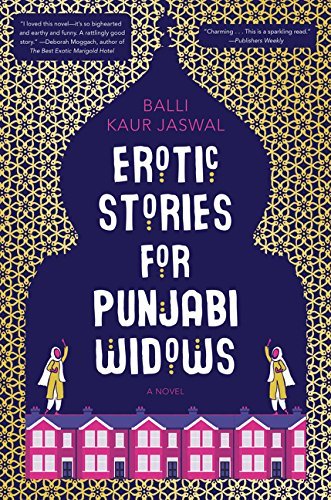
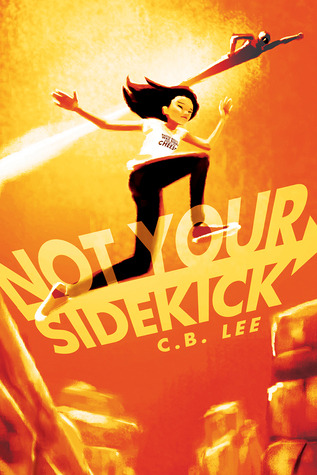



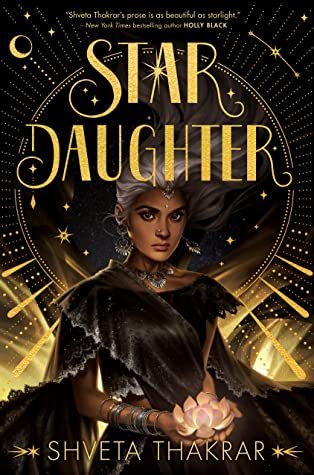
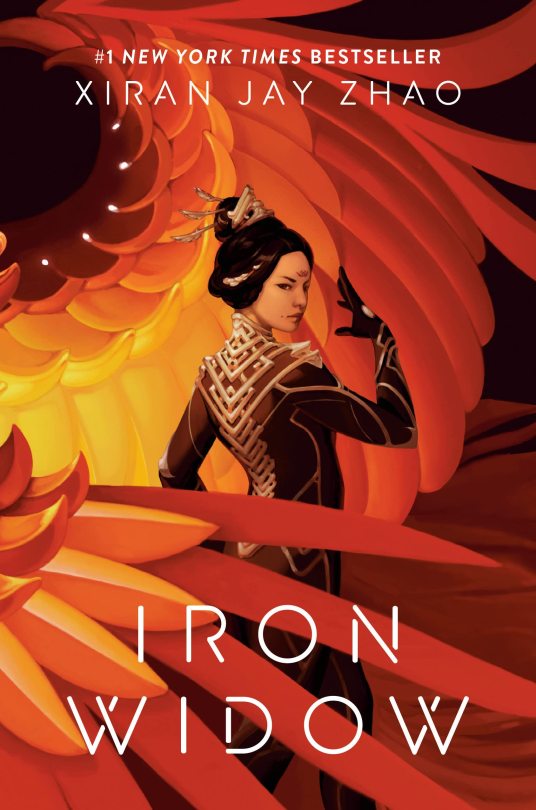
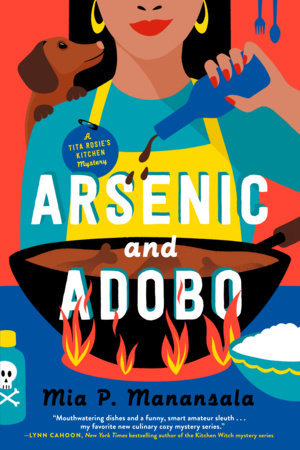
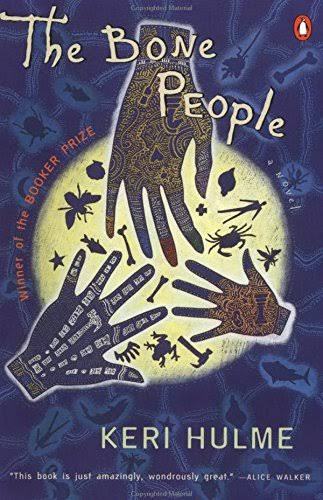
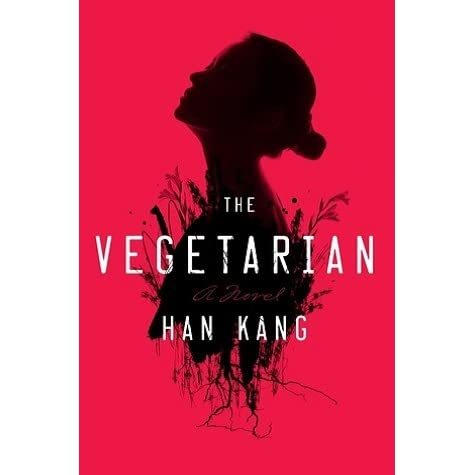
1. Stories for punjabi widows ( sorry for not saying the full name of the book I don't want Tumblr to hide this post for " inappropriate material") by Balli Kaur Jaswal. This is not a collection of short stories. This is a novel set in London that focuses on law school drop out Nikki who is trying to pay the bills well finding her place in life. On a whim she takes up a teaching job at her local Sikh Community Center. Before she knows what's going on her students have hijacked the class and turned it into a writing workshop for their favorite scandalous subject. Full of love, humor, drama, trauma, and secrets, Nikki starts to understand the women in her community better and starts to ask the harder questions she's been ignoring her whole life. This book was a joy to read. Be forewarned there is both humor and heartbreak. Trigger warning: arranged marriages, child brides, bride burning, domestic violence, harassment, threat of violence, physical violence.
2) NOT your Sidekick by CB Lee. I love love love this book! A young adult novel set in the futuristic world. You have queer main characters, a comedic villain, loving and supportive parents, fear of not being good enough, confronting the model minority myth, having to compete with the gold star older sibling, this book hits on some really good issues. Jess is in high school and is the most average person in her family. Being the only person in her family who does not have super powers she's trying hard to not let anyone see how upset she is when she accepts the fact that she's never going to be a superhero. Determine to make her college application look good, she signs up for an internship. After signing a non-disclosure agreement she finds out she'll be interning for the local c-list super villain. Things aren't exactly as they seem though, the more research Jess starts to do, and the more she starts to think about it, she's convinced that the government is up to something and the superheroes are involved. Well I'll admit this is the type of story that you can immediately figure out how it's going to end from the first chapter that doesn't mean that it's not enjoyable. Trigger warning: racism
3. We hunt The Flame by Hafsah Faizal. This fantasy novel was a delightful fairytale rich in Arabic lore. Zafira is a hunter who is just trying to keep the people in her Village alive as they have no means to grow food or hunt on their own thanks to a curse that has taken over her country. Enter Nasir, the prince of death. An assassin who has to do his father's evil bidding. When Zafira meets a witch who sends her on a magical quest that should help restore magic to the land, the sultan sends his son after Zafira to intercept her quest. Alliances, foes, magic, mystery, the book keeps you guessing who's going to betray who up to the end. Trigger warning: violence, death.
4. Build your house around my body by Violet Kupersmith. Written by a mixed-race Vietnamese American author, this book is about loss, wanting to be accepted, wanting to belong, wanting to fit in and find community, as well as the emptiness left by colonization. The book takes place over about seventy years. It jumps around time periods and focuses on several different characters. Nothing is told in a linear fashion so I know some readers have been confused by this. Basically we learn about Vietnamese American Winnie who has moved to Vietnam and wants so badly to fit in and find her home amongst Vietnamese Nationals but she just doesn't fit in with Vietnamese society. We also follow the childhood of three best friends who grew up in Vietnam and learned about their eventual dirft apart as they enter adulthood. There is an orphan boy who is living under the tyranny of French Catholics and we hear about how he got to watch the French be chase out by the Japanese. Then those Vietnamese children who were under French rule became oppressed by Japanese colonisation. Missing women, people looking to sell Vietnamese women as brides for foreigners all over the world, a ghost, plantations, build your house around my body feels like one big Vietnamese ghost story. Trigger warning: child abuse, violence towards women, murder, death, exploitation of people.
5. In the Miso Soup by Ryu Murakami. Kenji is an unlicensed translator and tour guide for tourist in Tokyo. One day Kenji gets a American client who makes him very uneasy. Most of the book takes place in Kenji's mind as he contemplates what's going on in the world around him and whether or not his client is acting weird or is just being an obnoxious American. With a violent serial killer on the loose and many coincidences piling up Kenji's paranoia might be justified. Well there's not much plot to the book itself, I really suggest it because of all of its social commentary. Although published in the 90s, it deals with Timeless issues that are still culturally and universally relevant to this day. Issues like sexism, exploitation of sex workers, cultural identity, domestic violence, xenophobia, loneliness, poverty, consumerism, are just a handful of the subjects this book touches on. There is a moment in the book i like where the tourist tells Kenji that he is surprised to see the Japanese youth dress the exact same way that African-American youth dress in New York. Even Kenji has a moment of realization. In the beginning of the book he is quick to condemn teenage girls who become sex workers to pay the bills, saying that if they weren't out at night with adult men they would not get hurt but by the end of the book he gets mad at how everybody always blames the girls in these situations and never blames the adult men who attacked them. Trigger warning: gore, mutilation, Bloodshed, violence, body parts being sliced off, murder, this book is not for the faint of heart. If you seen the 1990s Japanese horror film the Audition, Ryu also wrote the Audition novel. In the Miso soup follows a similar style of it's a slow build-up to the scary scene.
6. Star Daughter by Shveta Thakrar. If your fans of Neil gaiman's Stardust you'll like Star daughter. Sheetal is the daughter of a South Asian man and a literal star. Her mother came down from the heavens and fell in love with her father but when Sheetal was a child her mom returned to the heavens. As her 17th birthday draws near, Sheetal is unable to control her new powers, and ends up accidentally injuring her father. Wanting to correct her mistake, Sheetal and her best friend travel to the mysterious Night Market to try to find a cure. Instead they end up in the heavens where her mom resides and finds that her maternal side of the family are extorting her. In exchange for healing her father they want Sheetal to be their champion in a competition that will decide who gets to rule the heavens for the next millennia. Lies, family secrets, tragedy, love, Beautiful lore, and even more beautiful outfits, this fairy tale is a lovely young adult novel. Trigger warning: abuse, torture, mental health decline, blood
7. Iron Widow by Xiran Jay Zhao. A mix of folklore, sci-fi, fantasy, and historical fiction, if you're a fan of Pacific Rim I recommend Iron Widow. This book is very fast-paced from the get-go there's a battle, death, and bloodshed from the very beginning. Wu Zetian is the main protagonist of the story. On a quest to avenge her dead sister, Wu Zetian isn't going to let anyone get in her way, not her family, not her best friend, not the government, not the patriarchy, not even the aliens invading the planet. Li Shimin is the sexy but scary inmate with a mysterious past, on death row for murdering his entire family, who finds himself unwillingly being partnered up with Wu Zetian. Gao Yizhi is the rich son of one of the wealthiest men in the country and he's not afraid to rub it in your face if you piss him off. In fact my favorite line from this book comes from Gao, " you can't kill me, I'm rich!". He's very self aware and also Wu's best friend who wants to help keep her alive. As the three characters who are completely different come to rely on one another they end up uncovering multiple conspiracies and forming a wonderful polyamorous Triad. Trigger warning: mentions of sexual assault, death, abusive family, torture, violence towards women
8. Arsenic and Adobo by Mia P. Manansala follows the shameful life of Lila as she unwillingly returns to her small home town to live with her auntie after she is unable to get a job with her college degree and a bad breakup. Her tia Rosie runs a Filipino restaurant and is being harassed by the local food critic. Unfortunately for Lila the annoying food critic is also her ex-boyfriend. Things get worse when he dies at her aunt's restaurant and shenanigans ensue from there. Full of love, Millennial and Gen Z humor, lots of delicious food, and unapologetically Filipino this book is definitely not your grandma's murder mystery. Bonus points, there is some recipes at the end of the book. Trigger warning: death, murder, mentions of addiction.
9. The Bone People by Keri Hulme. Kerewin is a painter and indigenous Maori woman living in isolation in New Zealand. One day she finds a mute white child named Simon in her house. No one really knows much about Simon. He washed up on the beach one day after a shipwreck and doesn't talk. He is still able to communicate with other characters. He is both kind and loving but also prone to temper tantrums, violent outbursts, and stealing. Joe is a mixrace widower who takes on the responsibility of being a foster father for Simon but due to his alcoholism he abuses and beat Simon. As the three characters confront their own identity issues and trauma, they come to love one another and form a family together. This book is unsettling but at the same time heart-warming. Trigger warning: violence, alcoholism, child abuse.
10. The Vegetarian by Han Kang. Set in South Korea, this psychological drama takes place in 3 parts, all from the different points of view of Yeong-hye's relatives. Yeong-hye decides she is going to become a vegetarian one day. This decision does not come about in a quiet subtle way but rather radical in your face shock as her husband walks into the kitchen one day to find meat on the floor and in the trash can as she announces they will no longer have meat in their house. From her husband's point of view we find out that he is an unreliable narrator as it's clear he's pretty toxic, possibly even abusive towards his wife and constantly belittles her. In her brother-in-law's prospective he sees Yeong-hye as very attractive and wishes that his perfect Korean model wife was more like her sister. I won't give away any spoilers from the final part which is told from her sisters perspective but I will say it is sad. Ultimately the book is about conformity and how much Yeong-hye has had her life ripped away from her by her family, friends, and Society. Trigger warning abuse, toxic relationships, family abuse, attempted suicide, blood, medical abuse, mental health issues.
That's all for now. Have you read any of these books? Do you like any of them? Got any books to recommend for AAPI month?
182 notes
·
View notes
Text
About Ternopil State Medical University
Situated in Central and Eastern Europe, studying MBBS in Ukraine is considered a great option due to several factors. It includes world renowned courses along with cheap, high quality training. Ukraine is the second largest country in Europe and fifth in terms of population. If you choose to study MBBS in Ukraine, students will enjoy a European standard of living, better job prospects and a rich experience working with professors from the US, Canada and the UK.
Ukrainian teaching method is recognized worldwide and emphasizes practicality rather than mere teaching. Instead of talking more about Ukraine, let us now see why studying MBBS at Ternopil State Medical University is a great option for aspiring doctors.

University at a glance
· World Ranking: 4653
· Country Ranking List: 15th
is located in Ternopil. The university was established in 1957 and got national status, which is why it is also known as Ternopil National Medical University. According to the Ministry of Health of Ukraine, Ternopil State Medical University is the best medical university in the whole of Ukraine.
The university provides high quality education to aspiring practitioners and is a model of study that is accepted in most countries. Ternopil State Medical University educational standards are a mix of European and American standards.
Why study MBBS at Ternopil State Medical University?
Ternopil State Medical University has more than 150 experienced teachers and professors who provide quality education to the students. There are 10 conference rooms equipped with modern audio-visual technology, and students receive clinical training in the best-connected hospital throughout Ukraine.
Ternopil State Medical University follows the European credit testing system. This means that the MBBS degree from Ternopil State Medical University is valid in all countries of the European Union.
These are the main reasons why you should choose Ternopil State Medical University to study MBBS Abroad.
· Ternopil State Medical University is the best State Medical University in Ukraine.
· The entire course of MBBS is taught in English.
· The MBBS degree offered by Ternopil State Medical University is accepted all over the world.
· Ternopil State Medical University is approved by NMC, WHO, FAIMER, ECFMG and others.
· The university offers the cheapest fee structure as compared to any other state university in Ukraine.
· The Faculty of 102 Doctors of Science pays great attention to each student and is considered one of the best qualities of Ternopil State Medical University.
· It is the only university in the whole of Ukraine that offers 90 postgraduate courses.
· Indian food, especially Punjabi and Gujarati food, is available.
· The cost of living is low and Ternopil is considered the most peaceful city in Ukraine.
· The admission process to study MBBS at Ternopil State Medical University is simple and without donations.
Duration of MBBS at Ternopil State Medical University
MBBS at Ternopil State Medical University lasts 6 years, with the first 5 years devoted to theoretical studies and the last years to clinical practice/internship. During the second and third years, students can also choose to participate in practical tests.
Admission for MBBS Admission in Ternopil State Medical University
Admission to MBBS undergraduate and graduate courses at Ternopil State Medical University starts from July 1 and lasts till August 15. However, it is important that you submit your application before 30 July each year, as the visa process can take 2-3 months. Visas are issued only after receiving a letter of invitation and there have been cases where the Consulate of Ukraine has refused visas to students.
Orbit Guide is the best solution if you are looking for consultancy for MBBS abroad. You can fully trust us
#neet 2021#neet 2020#best mbbs abroad college#mbbs in kiev#best mbbs abroad consultancy#top mbbs abroad consultant#top mbbs abroad destination#mbbs from abroad#mbbs in abroad#study mbbs abroad
12 notes
·
View notes
Note
Hiya! Messaging to request some fc suggestions please? Needing help finding an fc for my character who will is very southern gothic, Ethel chain's Preacher's Daughter album, bones & all and southern blues inspired, I imagine her as dark haired and between ages of 25 to mid 30s - all ethnicities/races/genders come but if you don't mind me specifying , can I ask for only actors to be listed please? Aka no influences, singers or models etc - thank you so so much in advance!!!
Southern gothic, Ethel cain fc request here again sorry!! Forgot to add but if you don't mind me adding - also ideally someone who gives off messy/haphazard vibes please?? Kinda like they're obviously on the road a lot so have a permanent grease vibe?? So sorry if that's too specific and apologies again for adding this bug again tysm in advance!!!
Annabelle Wallis (1983) - Malignant.
Diane Guerrero (1986) Colombian - Doom Patrol.
Jodi Balfour (1987) - Quarry.
Courtney Bandeko (1988) Nigerian - Legacies.
Ritu Arya (1988) Indian - Lady Parts, Polite Society.
Nadia Hilker (1988) Tunisian / German - in The Walking Dead.
Nico Tortorella (1988) - is genderfluid, poly, pansexual and demisexual (any pronouns) - Fear The Walking Dead.
Rob Raco (1989) - Riverdale.
Hannah John-Kamen (1989) Nigerian / Norwegian - Resident Evil.
Michael Vlamis (1990) 37.5% Lebanese 25% Greek 25% Serbian 12.5% English - Roswell: New Mexico.
Emory Cohen (1990) - Lords of Chaos.
Kiowa Gordon (1990) Hualapai, English, Scottish, Danish, Manx - Blood Quantum.
Sarah Kameela Impey (1991) Indo-Guyanese / British - iWe Are Lady Parts.
Vico Ortiz (1991) Puerto Rican - non-binary (they/them) - Our Flag Means Death.
Joe Keery (1992) - Stanger Things.
Kiana Madeira (1992) Portuguese / Irish, Unspecified First Nations, Black Canadian - Fear Street.
Hari Nef (1992) Ashkenazi Jewish - is trans - Assassin Nation.
Katerina Tannenbaum (1993) - Betty,
Joseph Quinn (1993) - Stranger Things.
Taylor Russell (1994) Black Canadian / European - Bones and All.
Han Sohee (1994) Korean - My Name.
Lily Sullivan (1994) - Evil Dead Rise.
Sophia Ali (1995) Pakistani / Sicilian Italian, Danish, Norwegian, German - Uncharted, The Wilds.
Sasha Lane (1995) African-American, Māori, English, Scottish, Sorbian, French, Cornish, distant German, Italian, Belgian Flemish, Russian, and Northern Irish - is gay and has schizoaffective disorder - American Honey.
Adeline Rudolph (1995) Korean / German - Chilling Adventures of Sabrina.
Sarah Pidgeon (1996) - The Wilds.
Elliot Fletcher (1996) - is trans masc - Y: The Last Man.
Aria Shahghasemi (1996) Iranian - Legacies.
Archie Renaux (1997) English, Punjabi Indian.
Luka Sabbat (1997) Afro-Haitian, Irish, English, German.
Sydney Park (1997) African-American / Korean - There’s Someone Inside Your House.
Daisy Edgar-Jones (1998) - Where the Crawdads Sing.
Julia Dalavia (1998) Brazilian - Pantanal.
Felix Mallard (1998)
Hey anon! This ask was way harder than it should have been so I hope my followers give you more suggestions because I was struggling! Please keep in mind that some of these just give move around vibes.
4 notes
·
View notes
Text
Riddhima Kapoor Biography, Husband, Age, Wiki, Daughter
Riddhima Kapoor Biography, Husband, Age, Wiki, Daughter
Name Riddhima Kapoor Sahni Nick Name Riddhi Profession Fashion Designer, Model, and Entrepreneur Date of Birth 15 September 1980 Riddhima Kapoor Age 41 Year Sun Sign Virgo Birth Place Mumbai, India Religion Punjabi Khatri Nationality Indian Hometown Mumbai, India School New Era High School Panchgani, Maharashtra College American Intercontinental University, London Education Bachelor…

View On WordPress
#Ranbir kapoor riddhima kapoor sahani#Riddhima kapoor#Riddhima kapoor age#Riddhima kapoor biography#Riddhima kapoor daughter#Riddhima kapoor husband#Riddhima kapoor husband business#Riddhima kapoor instagram#Riddhima kapoor jewellery#Riddhima kapoor marriage#Riddhima kapoor sahani#Riddhima kapoor sahani age#Riddhima kapoor sahni#Riddhima kapoor sahni age#Riddhima kapoor sahni and ranbir kapoor#Riddhima kapoor sahni jewellery#Riddhima kapoor wedding#Riddhima kapoor wiki
2 notes
·
View notes
Note
Ok so, the paper airplane Danny makes is Western in origin, so like a lot of American kids Danny probably picked it up at school but Davos, growing up in Kun Lun, would've been unfamiliar with it. However, the shuriken Davos makes is a traditional Japanese model. So is Danny's lily he makes (when he's trying to show off to his assistant) , but since we only see ever him make one as an adult, he totally could've learned it from Davos or a monk in Kun Lun.
I love this. It's a truly equal-level exchange of cultural practices between them. I do still think Danny's use of the paper airplane in what was probably Lei Gong's study was both awe inspiring and disrespectful to child Davos, and symbolizes his feelings toward Danny in metonymic form.
I'm also certain Davos taught Danny shuriken. He was always a patient teacher when they were kids.
What this also brings to the table, though, is that K'un-Lun is a heterogeneous mixture of more than just Tibetan and Punjabi cultural practice, if Davos knows how to make Japanese paper art and Japanese visual motifs.
1 note
·
View note
Photo

Alok Vaid-Menon
Gender: Non binary/transfemme (they/them)
Sexuality: Queer
DOB: 1 July 1991
Ethnicity: Indian (Punjabi), Malaysian (Malayali)
Nationality: American
Occupation: Performance artist, poet, writer, activist, fashion designer, model
#Alok Vaid Menon#non binary#queer#1991#indian#Punjabi#Malayali#asian#biracial#poc#Malaysian#artist#performance artist#poet#writer#activist#model#fashion designer
69 notes
·
View notes
Text
Beauty of women and the phi of men
Years ago, in a London hotel, when the Punjabi girl (an air hostess of an erstwhile airline), after primping in front of the mirror, opened her arms wide and asked me how did she look, I ran into them in a jiffy and said, "You are the prettiest to my eyes." Yes, I really meant it. She did look dropdead gorgeous. Then with the passage of time in life, as scenes changed, I found many women fall in that "prettiest" category.
Though I am one of those who believe that, in life, everything happens in a particular pattern, I miserably fail to see any pattern in my obsession.
When one of my friends on the other day showing me Bella Hadid on the cover of Vogue and asked me what mark would I award her out of 100, I gave an abysmally low number.
I really believe that if we juxtaposition the American supermodel Isabella Khair Hadid and our own Vidya Balan and ask men to choose the one who they would want to date, I am sure the majority would slant towards the latter.
But, if you swear by 'the science of beauty', Hadid should win most hearts. Going by some Fibonacci numbers and the so-called golden ratio called phi, Victoria's Secret model, Hadid, was declared the most beautiful woman on the planet.
If we can forget our Vidya Balan and Bella Hadid just for a while, in the 13th century AD, an Italian mathematician, Leonardo Fibonacci, discovered the sequence that converges on phi. The sequence would start with 0 and 1, and the next number would be the sum of the previous two numbers. Thus, each new number in the sequence is simply the sum of the two before it...like 0,1,1,2,3,5,8,13... and so on. And if we take the ratio of each number to the one before it and go on till the point where it converges on phi, the magical number would be 1.6180339...This is what is called the golden ratio. If we apply this ratio to the proportions of a rectangle, it will be the most visually satisfying geometric form. Pyramids were built on this basis, and later Leonardo da Vinci used this divine proportion in his paintings. Nature too is on this proportion. Researchers say even every leaf on the stem of a plant grows in this golden angle so that the new leaf collects enough sunlight without throwing the leaf below it into too much shadow. There is also an argument that says this magical sequence was first discovered by Indian mathematicians as early as in the 6th century AD.
So what? What has that got to do with Hadid or Vidya Balan? The US-based cosmetic surgeon, Dr Stephen R. Marqardt, created a face mask based on this proportion, and Hadid's face is the closest fit to it. Her eyes, nose, ears, lips and chin ...all are in that proportion. Marquardt believes if life is biology, biology is physiology, physiology is chemistry, chemistry is physics and physics is math, life should be maths, and hence phi is divine.
But in reality, no man would apply, even in his craziest dreams, the Marquardt math and say the woman is pretty. When I was a schoolboy, I loved actress Lakshmi in the movie Julie and thought she was the prettiest woman on the planet. Then as an adolescent, I realised it was not Lakshmi but Dimple Kapadia in Saagar. Then, at one point in time, I thought the Argentine tennis star, Gabriela Sabatini was by far the prettiest. Would any of them fit well with the Fibonacci numbers? At least, my Punjabi girl (should I say 'woman' now!)? Who cares for these numbers?
Kahlil Gibran is perfectly right when he said on beauty,
The aggrieved and the injured say, "Beauty is kind and gentle.
"Like a young mother half-shy of her own glory, she walks among us."
And the passionate say, "Nay, beauty is a thing of might and dread.
"Like the tempest, she shakes the earth beneath us and the sky above us."
The tired and the weary say, "Beauty is of soft whisperings. She speaks in our spirit,
"Her voice yields to our silences like a faint light that quivers in fear of the shadow."
Beauty is life when life unveils her holy face. But you are life and you are the veil.
Beauty is eternity gazing at itself in a mirror. But you are the eternity and you are the mirror.
1 note
·
View note